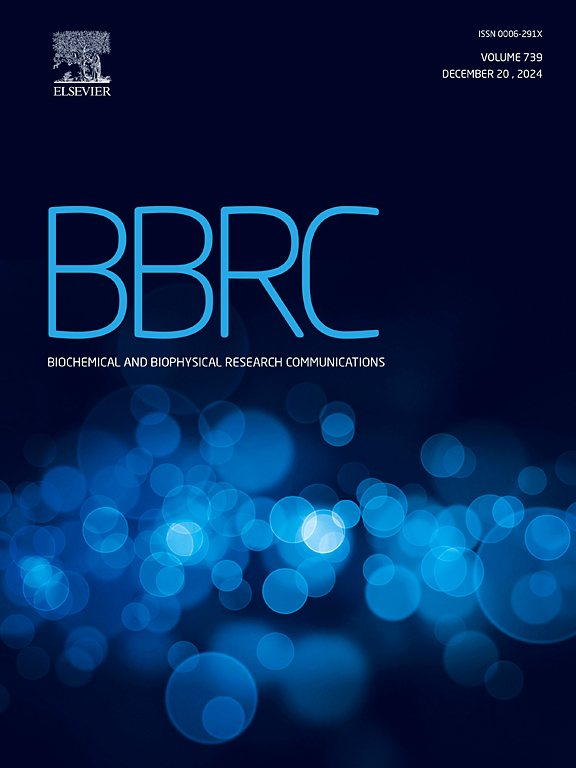ADH1B regulates tumor stemness by activating the cAMP/PKA/CREB1 signaling axis to inhibit recurrence and metastasis of lung adenocarcinoma
IF 2.5
3区 生物学
Q3 BIOCHEMISTRY & MOLECULAR BIOLOGY
Biochemical and biophysical research communications
Pub Date : 2025-03-22
DOI:10.1016/j.bbrc.2025.151681
引用次数: 0
Abstract
Lung cancer remains the leading cause of cancer-related mortality, with non-small cell lung cancer (NSCLC) accounting for approximately 85 % of cases. Despite advancements in diagnostics and therapies, tumor metastasis and drug-resistant recurrence present significant clinical challenges. This study evaluates the prognostic role of ADH1B in lung adenocarcinoma (LUAD) metastasis and recurrence. Analysis of tissue samples from 46 LUAD patients revealed that lower ADH1B expression correlates with increased metastasis and poorer overall survival. Kaplan-Meier survival analysis demonstrated that elevated ADH1B levels are significantly associated with longer overall survival and recurrence-free survival. In vitro experiments indicated that ADH1B overexpression inhibits proliferation, migration, and invasion in A549 and H1299 cell lines. Additionally, ADH1B expression was negatively correlated with tumor stemness markers, indicating its role in suppressing stem cell characteristics. Mechanistically, ADH1B activates the cAMP/PKA/CREB1 signaling pathway, enhancing SOX1 expression and inhibiting the ERK pathway, which contributes to reduced tumor stemness. In vivo studies confirmed that ADH1B overexpression decreases stem cell populations and tumor growth in xenograft models. Our findings suggest that ADH1B functions as a critical regulator of LUAD progression, with its low expression acting as a marker of poor prognosis while promoting metastasis and tumor stemness. This research identifies ADH1B as a potential therapeutic target, offering novel strategies to address the challenges of metastasis and recurrence in LUAD.
求助全文
约1分钟内获得全文
求助全文
来源期刊
CiteScore
6.10
自引率
0.00%
发文量
1400
审稿时长
14 days
期刊介绍:
Biochemical and Biophysical Research Communications is the premier international journal devoted to the very rapid dissemination of timely and significant experimental results in diverse fields of biological research. The development of the "Breakthroughs and Views" section brings the minireview format to the journal, and issues often contain collections of special interest manuscripts. BBRC is published weekly (52 issues/year).Research Areas now include: Biochemistry; biophysics; cell biology; developmental biology; immunology
; molecular biology; neurobiology; plant biology and proteomics

 求助内容:
求助内容: 应助结果提醒方式:
应助结果提醒方式:


